Gamma Rays: Helper or Hazard?
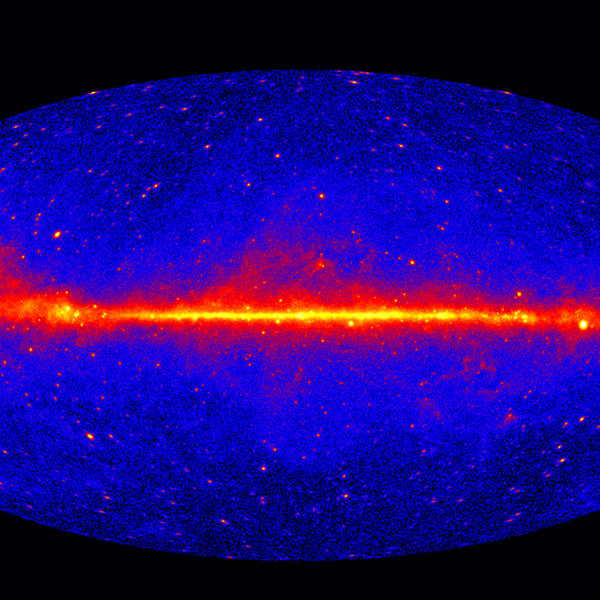
Gamma ray image of the Milky Way taken by NASA’s Fermi Gamma Ray Space Telescope (NASA)

Gamma ray image of the Milky Way taken by NASA’s Fermi Gamma Ray Space Telescope (NASA)
How does this align with my curriculum?
| Grade | Course | Topic |
|---|
Gamma rays might make you think of cancer, harmful radiation or superheroes. But gamma rays have lots of uses: food safety, manufacturing and even medicine!
Ever wanted to be as strong as the Hulk, the superhero who can lift mountains and destroy entire planets? Did you think that radiation from gamma rays would be all you needed for that? Think again.
The Hulk got his superhuman strength from gamma rays, which are a form of radiation. The gamma rays came from an experimental bomb. Exposure to gamma rays will not give you superpowers, though. But gamma rays are useful to humans in many other ways! They are used in the medical industry. They are used in manufacturing. They are sometimes even used in the food processing industry. Let’s look at how some of those industries use gamma rays. But first, let’s look at what gamma rays are and where they come from.
What are gamma rays?
Gamma rays are a type of wave on the electromagnetic spectrum. Out of all the waves on the spectrum, gamma rays have the shortest wavelength and the highest energy of the waves.
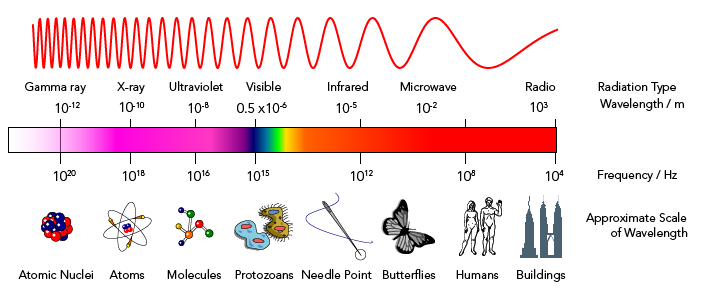
Did you know?
The term “gamma ray” was coined by the physicist Ernest Rutherford. The work he did on gamma rays at McGill University earned him a Nobel Prize in Chemistry.
Gamma rays are produced in many places. Most often, they occur in space as gamma ray bursts. Gamma ray bursts are the most powerful explosions in the universe since the Big Bang. On Earth, gamma rays can be produced by lightning and nuclear explosions. They can also be artificially created using a laser. An example of this is the Gemini laser at the Rutherford Appleton Central Laser Facility in the United Kingdom.
Did you know?
A gamma ray burst can emit more energy in 10 seconds than the Sun will emit in its entire lifetime. The sun is expected to live 10 billion years, so that’s a lot of energy!
How do we detect gamma rays?
The Earth is surrounded by an invisible layer of water vapour and gases called the atmosphere. The atmosphere is made up of water, carbon dioxide, ozone, and other molecules. The atmosphere blankets Earth and protects it from harmful radiation that comes from outer space. But regions called atmospheric windows allow some types of radiation through. For example, all visible light passes through an atmospheric window to reach Earth. So does some ultraviolet (UV) light. On the other hand, 100 percent of gamma radiation is blocked by Earth’s atmosphere. As a result, gamma rays that occur in space can only be detected from space.
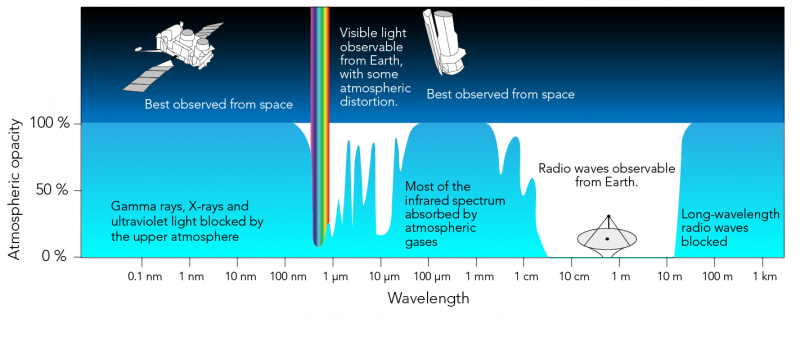
In 1967, the OSO-3 satellite made the first significant gamma ray detection from space. This satellite detected a total of 621 cosmic gamma rays. Shortly after, the United States’ Vela-5b satellite was originally put into orbit to detect gamma rays originating from nuclear bomb testing. Instead, it detected gamma ray bursts from distant galaxies. This was an amazing discovery! It lead to a new branch of research, gamma radiation.
Did you know?
The Neil Gehrels Swift Observatory and the Fermi Gamma-Ray Space Telescope are two spacecraft launched to study gamma rays in space.
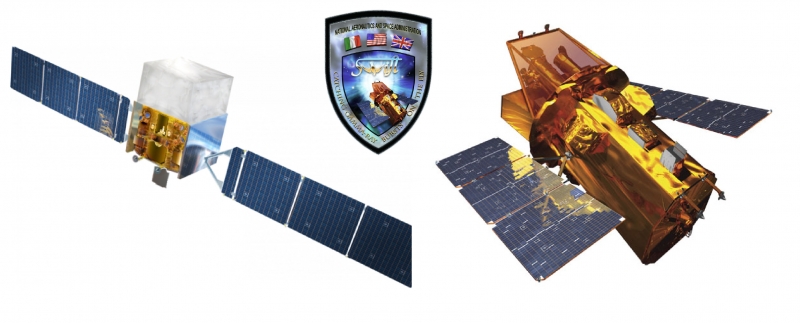
How are gamma rays used in medicine?
Gamma rays remove electrons from atoms. Because of this, they are a form of radiation known as ionizing radiation. Studies show that radiation can damage DNA, and this damage can lead to cancer. These studies have focused on survivors of nuclear explosions, people given high doses of radiation to treat cancer, or people over-exposed to radiation during their jobs.
However, gamma rays can also be used to treat cancer. Radiation therapy, or radiotherapy, uses high-energy gamma rays to kill cancer cells and shrink tumours. Gamma Knife Radiosurgery is a special form of radiotherapy. It uses beams of gamma rays to treat injured brain tissue by damaging the DNA of dangerous cells. This technique is one of the most accurate and precise radiosurgery systems. It can focus on a small area and avoid damaging surrounding tissues. It can also target cells in the middle of the brain without cutting into the surrounding brain. In fact, only 1 mm of additional tissue around the tumour is destroyed.
How are gamma rays used in the food industry?
Irradiation is the process of using ionizing radiation to kill bacteria and other microorganisms in food products. Food producers can use gamma sterilization. That’s a type of irradiation that uses gamma rays to increase the shelf-life of food and drinks. Food products are bombarded with a source of high-energy gamma rays, normally Cobalt-60 or Cesium-137. These gamma rays modify chemical bonds and kill bacteria that can cause illness. This is an important process for food preservation, just like canning fruit or pasteurizing dairy products.
People worry that irradiated foods might not be safe to eat. After all, gamma ray exposure has been linked to radiation poisoning. However, the US Food and Drug Administration (FDA) has been studying irradiated food for over 30 years. Their studies show that irradiated food is completely safe to eat.
Did you know?
Irradiation is one way to help preserve food sent into space with astronauts! Irradiated foods can last for years without spoiling.
How are gamma rays used in manufacturing?
Industrial radiography is a method used to test materials for flaws, such as cracks. Using high-energy electromagnetic radiation, testers can see a material’s internal structure. In industrial radiography, gamma rays let people look for problems without damaging the materials. This process is very similar to how a radiologist uses x-rays to inspect your bones for breaks or fractures. X-rays can safely pass through your skin and organs without harming you. In the same way, gamma rays can pass through materials without damaging them.
Industrial radiography is a nondestructive way to test products such as pipes, welded materials or airplane parts. These testing procedures ensure that the materials are safe and of good quality. X-rays and ultrasound radiation are also used for this work.
However, gamma ray devices can be smaller and use less power.
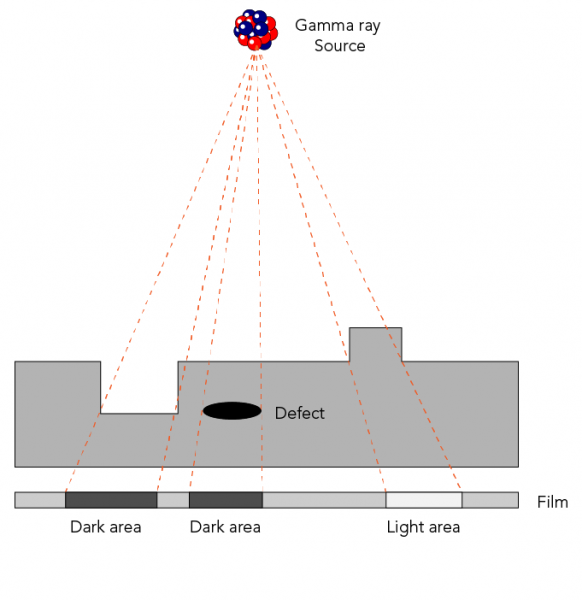
Can gamma rays be hazardous?
High doses of radiation can be dangerous or even fatal for humans. Science fiction movies commonly use gamma radiation to create mutated creatures. This can lead people to believe that radiation is dangerous and should be avoided. The reality is that we are surrounded by radiation. It occurs naturally above us in space and below us in the Earth’s crust. This means that radiation is also found in our food and the air we breathe. It also comes from sources made by humans. Lasers are an example. But even if we combine all of this radiation, it still would not harm us. We would have to absorb about 750 times more radiation than that before it could hurt us.
Summing up...
Gamma rays may not give you superpowers. But they are found almost everywhere. They have many uses, from treating diseases to sterilizing different products. But there are some things they can’t do -- like turn you into the Hulk! So the next time you wish for superhuman strength, try hitting the gym and lifting weights instead.
Starting Points
- Have you ever had a medical image taken? Does it concern you that radiation is used to take the image? Why or why not?
- Do you know if any of the food you eat has been irradiated? Would you prefer to take your chances with potential bacteria in your food or have your food irradiated to make sure there are no bacteria present in your food? Explain your answer.
- How has space technology contributed to our understanding of gamma rays?
- What are the potential economic benefits of industrial radiography in manufacturing?
- What are gamma rays? What are the sources of gamma rays on Earth? What is the source of gamma rays in space?
- What are cosmic gamma rays? Is it possible for cosmic gamma rays from space to be detected on Earth? Why or why not?
- What practical uses do gamma rays have?
- What is the purpose of irradiating food? What effect does the radiation have on the quality of the food product? What effect does the irradiated food have on the human body?
- What are the advantages of using industrial radiography for testing manufactured materials and products?
- This article and embedded video can be used for Science, Physics, Technology & Engineering, and Health & Wellness teaching and learning related to Gamma Rays, Food Safety, Radiation, Cancer and Manufacturing.
- Before reading this article and viewing the embedded video, teachers could have students complete a Vocabulary Preview learning strategy to help engage prior knowledge and introduce new terms. Ready-to-use Vocabulary Preview BLMs are available in [Google doc] and [PDF] formats.
- After reading the article and viewing the video, students could complete a Concept Definition Map learning strategy to consolidate understanding of the concept of gamma rays. Ready-to-use Concept Definition Web BLMs are available in [Google doc] and [PDF] formats.
- To further consolidate learning, students could consider the risks of not using gamma rays to the benefits of using gamma rays for each of the industrial uses of gamma rays mentioned in the article (manufacturing testing, precision surgery, and food sterilization), also called a Risk-Benefit Analysis.
- To extend learning and consolidation, teachers could have students create a graphic organizer or infographic (see Infographic Creator learning strategy) that highlights and summarizes the industrial applications of gamma rays. This task could involve further research to learn more about the different applications of gamma rays and the technology involved in these applications.
Connecting and Relating
- Have you ever had a medical image taken? Does it concern you that radiation is used to take the image? Why or why not?
- Do you know if any of the food you eat has been irradiated? Would you prefer to take your chances with potential bacteria in your food or have your food irradiated to make sure there are no bacteria present in your food? Explain your answer.
Relating Science and Technology to Society and the Environment
- How has space technology contributed to our understanding of gamma rays?
- What are the potential economic benefits of industrial radiography in manufacturing?
Exploring Concepts
- What are gamma rays? What are the sources of gamma rays on Earth? What is the source of gamma rays in space?
- What are cosmic gamma rays? Is it possible for cosmic gamma rays from space to be detected on Earth? Why or why not?
- What practical uses do gamma rays have?
- What is the purpose of irradiating food? What effect does the radiation have on the quality of the food product? What effect does the irradiated food have on the human body?
- What are the advantages of using industrial radiography for testing manufactured materials and products?
Teaching Suggestions
- This article and embedded video can be used for Science, Physics, Technology & Engineering, and Health & Wellness teaching and learning related to Gamma Rays, Food Safety, Radiation, Cancer and Manufacturing.
- Before reading this article and viewing the embedded video, teachers could have students complete a Vocabulary Preview learning strategy to help engage prior knowledge and introduce new terms. Ready-to-use Vocabulary Preview BLMs are available in [Google doc] and [PDF] formats.
- After reading the article and viewing the video, students could complete a Concept Definition Map learning strategy to consolidate understanding of the concept of gamma rays. Ready-to-use Concept Definition Web BLMs are available in [Google doc] and [PDF] formats.
- To further consolidate learning, students could consider the risks of not using gamma rays to the benefits of using gamma rays for each of the industrial uses of gamma rays mentioned in the article (manufacturing testing, precision surgery, and food sterilization), also called a Risk-Benefit Analysis.
- To extend learning and consolidation, teachers could have students create a graphic organizer or infographic (see Infographic Creator learning strategy) that highlights and summarizes the industrial applications of gamma rays. This task could involve further research to learn more about the different applications of gamma rays and the technology involved in these applications.
Learn more
Debunking Radiation Myths (2016)
An accessible article by Patrick McCarthy for Recoil Offgrid that provides evidence to debunk a number of myths about radiation.
Tour of the EMS 08 - Gamma Waves (2010)
A short video (3:41 min.) from ScienceAtNASA introduction to gamma rays on Earth and in space.
Article from the San Diego Gamma Knife Center explains gamma knife surgery and details what it’s used for.
Fermi's Five-year View of the Gamma-ray Sky (2013)
Analysis of images taken by the Fermi Gamma-ray Space Telescope from NASA's Goddard Space Flight Center.
Incredible hulking facts about gamma rays (2019)
Facts about gamma rays by Matthew R. Francis accompanied by fun illustrations.
References
American Cancer Society Medical and Editorial Content Team. (2018, November 2). Microwaves, radio waves, and other types of radiofrequency radiation.
Canadian Space Agency. (2018, January 4). Eating in space.
Columbia Neurological Surgery. (n.d.). Gamma knife radiosurgery.
Committee on Radiation Source Use and Replacement, National Research Council. (2008). Radiation source use and replacement: Abbreviated version.
National Aeronautics and Space Administration. (2013, September). Gamma ray astronomy.
National Aeronautics and Space Administration, Science Mission Directorate. (2010). Tour of the electromagnetic spectrum: Gamma rays.
National Cancer Institute. (2019, January 8). Radiation therapy to treat cancer.
Palma, C. (n.d.). Radio waves to gamma-rays.
Sarri, G. (2018, January 15). How we created a mini ‘gamma ray burst’ in the lab for the first time. The Conversation.
United States Environmental Protection Agency. (2019, March 26). Industrial radiography.
United States Food and Drug Administration. (2018, April 1). Food irradiation: What you need to know.